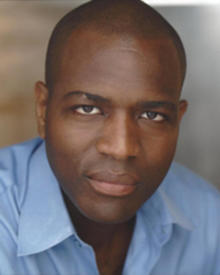
From colour-blind to colour-wise
Waterloo professor hopes conversations about race will eliminate racial misunderstandings.

Waterloo professor hopes conversations about race will eliminate racial misunderstandings.
By Jenna Braun University Relations People have been taught to believe that being “blind” to skin colour is a positive way to approach anti-racism but according to Vershawn Ashanti Young, a professor in the Faculty of Arts, this major misconception leaves marginalized races and cultures unseen.
People have been taught to believe that being “blind” to skin colour is a positive way to approach anti-racism but according to Vershawn Ashanti Young, a professor in the Faculty of Arts, this major misconception leaves marginalized races and cultures unseen.
“Many politicians, academics and everyday people say they don't see another person's colour or race,” says Young. “But the problem is that being colour-blind is really to deny and refuse to see others' cultural differences.”
Young aims to frame these misunderstandings in a positive way by offering cultural competency workshops and anti-racist training. He’s also encouraging a more comprehensive cultural discussion with the release of his new book, The Routledge Reader of African American Rhetoric.
Cultural competency is the ability of an individual to effectively understand and interact with people across varying cultures. “If we open up a conversation about race instead of hiding behind a cloak of colour-blind ideology, we will move from being colour-blind to being colour-wise,” Young says.
The workshops held across the U.S. and Canada often run with the help of Frankie Condon, a professor of English Language and Literature. They include consultations with academic departments hoping to revise their curriculum to be more culturally inclusive.
“There is a disparity in the topics and figures who are regularly taught in the curriculum,” says Young. “In the workshops, academics are asked who else could be included, who is excluded and what is the importance of diverse voices in the educational process.”
When it comes to his new book, which he dubs his “crown jewel,” Young hopes readers will see that African American rhetoric is all around us in areas ranging from technology, music, art, politics, queer studies and history. Through the power of education, his goal is to increase awareness and to encourage others to learn about African American culture.
In the spring, Young is teaching a class based on his book and he is looking forward to learning more from his students and the perspectives they will bring to the classroom.
“I may not be like the majority of professors they’ve had,” he says. “I hope they see it as a rich opportunity to learn from each other, and that differences are not barriers, but opportunities for growth.”

Read more
Discover how Waterloo alumni are driving Canada’s economy with five tech companies making a local and global impact

Read more
Meet the five exceptional graduate students taking the convocation stage as Class of 2024 valedictorians

Read more
Master of Arts graduate found meaning in interdisciplinarity scholarship to expand her research interests and forge an exciting future
The University of Waterloo acknowledges that much of our work takes place on the traditional territory of the Neutral, Anishinaabeg, and Haudenosaunee peoples. Our main campus is situated on the Haldimand Tract, the land granted to the Six Nations that includes six miles on each side of the Grand River. Our active work toward reconciliation takes place across our campuses through research, learning, teaching, and community building, and is co-ordinated within the Office of Indigenous Relations.